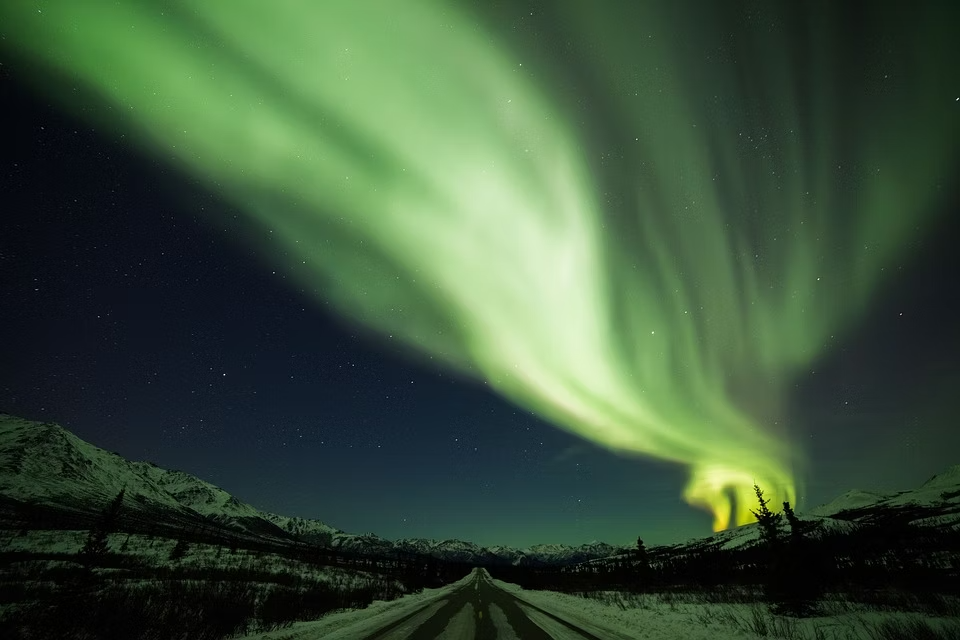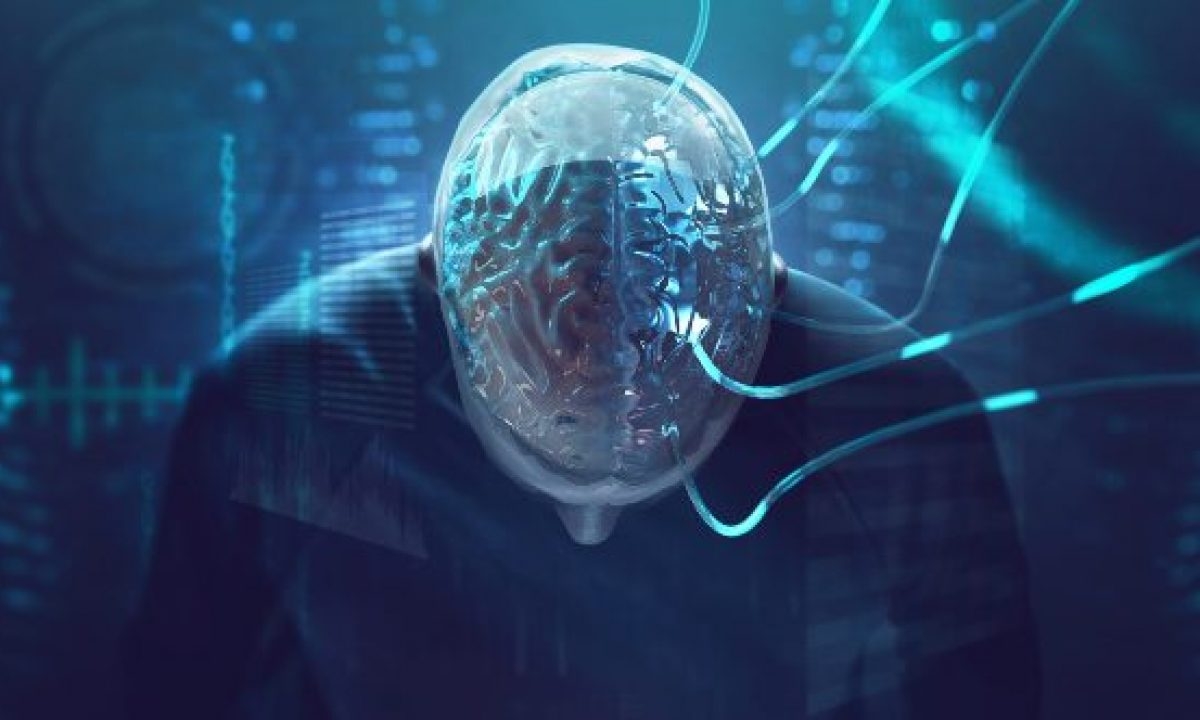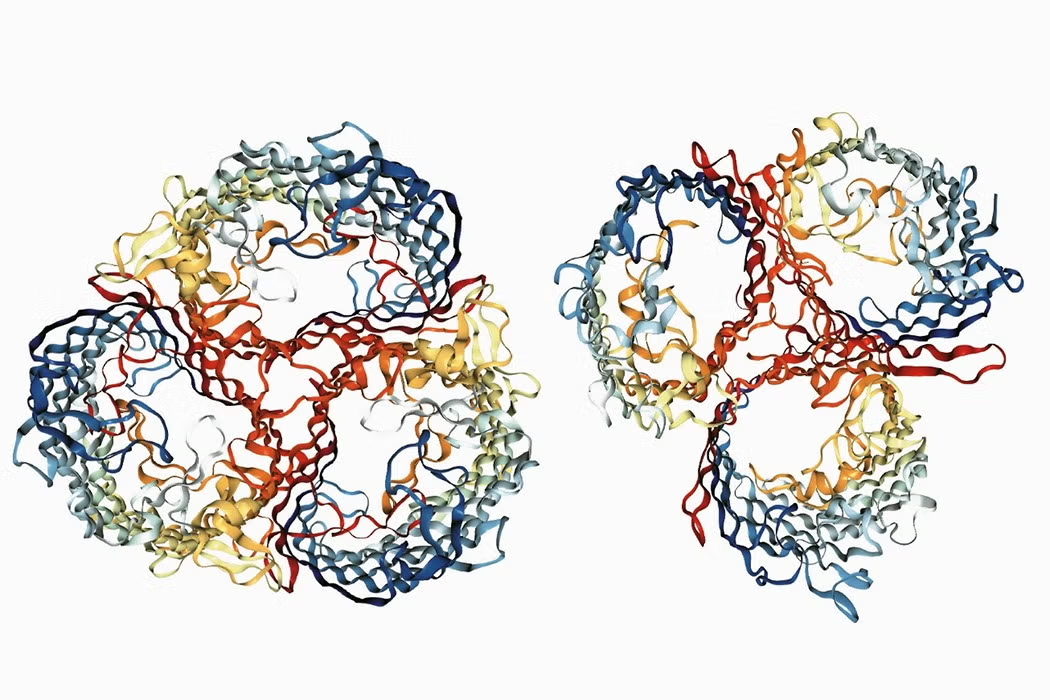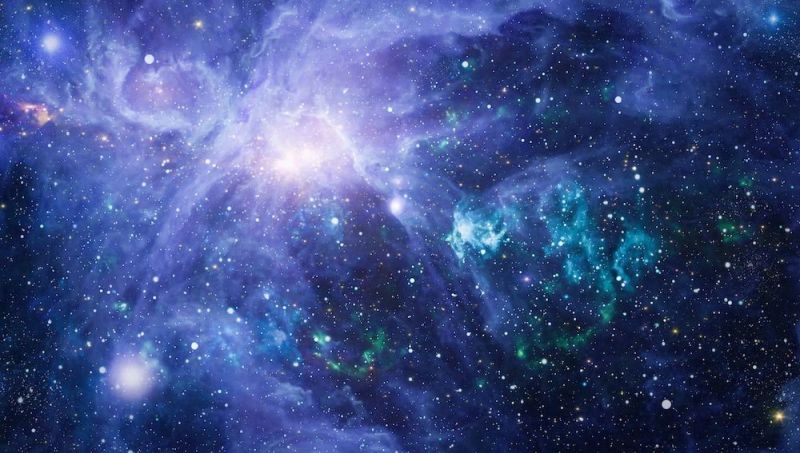The Hidden Science of Everyday Miracles: 10 Phenomena You Never Knew Existed

Introduction
In a world teeming with the extraordinary, it’s easy to overlook the marvels that exist right in front of us. While technological advancements and groundbreaking discoveries dominate headlines, some of the most awe-inspiring phenomena remain hidden in plain sight. These are the everyday miracles—rare and enigmatic occurrences that challenge our understanding of nature, science, and even ourselves.
This articleis a journey into the unseen and the unknown. From the shimmering beauty of bioluminescent forests to the intricate networks of fungi beneath our feet, these phenomena reveal how much we still have to learn about the world around us. They remind us that science is not just about uncovering what’s far away or futuristic, but also about exploring the profound mysteries woven into the fabric of our daily lives.
Why These Phenomena Matter
Understanding these hidden marvels does more than satisfy curiosity; it pushes the boundaries of knowledge, inspires innovation, and fosters a deeper connection to the natural world. Many of these phenomena hold the potential to revolutionize fields like medicine, technology, and environmental science. For example, studying self-healing materials inspired by biological processes could lead to infrastructure that repairs itself, saving billions of dollars in maintenance costs.
Moreover, the stories of these miracles—whether they occur in the depths of the ocean, the vastness of the sky, or the intricacies of the human mind—remind us of the beauty and complexity of life itself.
Curiosity: The Gateway to Discovery
The desire to uncover hidden truths is a universal human trait. It’s this curiosity that drives scientific exploration and innovation. Yet, in our fast-paced, technology-driven lives, we often overlook the incredible mysteries that surround us daily. This article is a call to rekindle that sense of wonder, to see the world not just as it appears, but as it truly is: a realm of endless possibilities and unseen miracles.
Let’s begin this journey into the remarkable and uncover the hidden science of everyday miracles.
Table of Contents
| 1. | Unseen Natural Phenomena |
| 2. | Rare Human Abilities |
| 3. | Astonishing Technological Breakthroughs |
| 4. | Forgotten Ancient Technologies |
| 5. | The Microcosm of Everyday Life |
| 6. | Unique Cultures and Traditions |
| 7. | The Unexplored Universe |
| Summary |
Note: Image sources are Google and Freepik
1. Unseen Natural Phenomena

The natural world is brimming with wonders that often escape our attention. From phenomena that seem almost magical to occurrences that defy conventional explanations, these hidden marvels challenge our understanding of how the world works. Here, we explore some of the most extraordinary natural phenomena that reveal the astonishing power and beauty of our planet.
1.1 The Sound of the Northern Lights: Myth or Reality?
For centuries, the Aurora Borealis, or northern lights, have captivated onlookers with their ethereal display of dancing lights across polar skies. But did you know that some witnesses claim to hear the northern lights? These faint, crackling sounds have sparked debates among scientists and mystics alike.
Recent research suggests there may be some truth to these accounts. Electrophonic transduction, a phenomenon where electromagnetic energy from the aurora interacts with the Earth’s magnetic field, might generate audible sounds under specific conditions. While these sounds are rare and elusive, the possibility of "hearing" an aurora adds a fascinating new layer to this already mesmerizing natural display.
1.2 Bioluminescence Beyond the Ocean: Glowing Forests and Rivers
When we think of bioluminescence, glowing plankton in ocean waves often comes to mind. However, this natural light show isn’t confined to marine environments. On land, bioluminescent organisms like fungi, fireflies, and even certain bacteria create surreal landscapes that seem plucked from a fantasy novel.
- Glow-in-the-Dark Forests: In dense tropical forests, certain fungi emit a soft, eerie glow to attract insects that spread their spores. Known as foxfire, this bioluminescence has fascinated scientists and storytellers for generations.
- Glowing Rivers: Rare occurrences of bioluminescent algae in freshwater systems can turn rivers into glowing streams of light, especially in warmer climates where algae blooms are more likely.
Bioluminescence not only enchants the eye but also holds promise for scientific advancements. Researchers are studying its potential applications in medical imaging, sustainable lighting, and even bioengineering.
1.3 Rogue Waves: Nature’s Secret Giants of the Sea
Imagine a towering wave appearing out of nowhere, twice the height of the surrounding sea. These are rogue waves, also known as "freak waves," and they were long dismissed as sailor folklore. Modern science has proven their existence, revealing a phenomenon as dangerous as it is mysterious.
Rogue waves can reach heights exceeding 80 feet and form unpredictably due to complex interactions between ocean currents, wind, and wave patterns. They’ve been responsible for numerous shipwrecks and have baffled oceanographers for decades.
The study of rogue waves is critical not only for maritime safety but also for understanding the underlying physics of wave dynamics. Advanced simulation technology and satellite imaging are now being used to predict these occurrences, potentially saving lives and vessels at sea.
2. Rare Human Abilities

The human body and mind possess incredible potential, much of which remains shrouded in mystery. From extraordinary sensory experiences to abilities that seem almost supernatural, these rare traits challenge the boundaries of what we believe is possible. In this section, we uncover some of the most fascinating and scientifically intriguing abilities that a few individuals experience, offering a glimpse into the untapped capabilities of the human species.
2.1 The Science of Synesthesia: Seeing Sounds and Tasting Colors
Imagine listening to a symphony and seeing vibrant colors dance before your eyes or tasting specific flavors when reading certain words. This is the world of synesthesia, a neurological phenomenon where the stimulation of one sensory pathway triggers automatic and involuntary experiences in another.
- Common Forms of Synesthesia:
- Grapheme-Color Synesthesia: Seeing letters and numbers in specific colors.
- Chromesthesia: Associating sounds, like musical notes, with colors.
- Lexical-Gustatory Synesthesia: Tasting specific flavors when hearing or thinking of certain words.
While synesthesia might sound like a neurological quirk, it offers insights into how the brain processes sensory information. Researchers believe it results from heightened connectivity between sensory regions in the brain. Studying synesthesia could unlock new ways to understand creativity, memory, and perception. Interestingly, some of the most famous artists and musicians, including Wassily Kandinsky and Duke Ellington, reportedly experienced synesthesia, which may have influenced their work.
2.2 Super Tasters: A Genetic Gift for Flavor Perception
Not all taste buds are created equal. Approximately 25% of the population are supertasters, individuals who have a heightened sensitivity to certain flavors, particularly bitterness. This ability stems from a genetic variation that results in more taste buds on the tongue, amplifying their perception of taste.
- Characteristics of Supertasters:
- Intense dislike for bitter foods like kale, coffee, and dark chocolate.
- Greater sensitivity to sweetness, spiciness, and saltiness.
While being a supertaster may seem like a unique advantage, it’s a double-edged sword. These individuals are often more averse to healthy bitter vegetables, potentially impacting their diet. Scientists studying supertasters aim to understand the genetic and evolutionary implications of taste perception and how it influences nutrition and food preferences globally.
2.3 Hyperthymesia: The Gift and Curse of an Extraordinary Memory
For most people, memories fade over time, but for those with hyperthymesia, or Highly Superior Autobiographical Memory (HSAM), the past is vividly present. These individuals can recall nearly every detail of their lives with astonishing accuracy, down to the exact date, time, and weather.
- Famous Cases: Actress Marilu Henner is one of the few publicly known individuals with hyperthymesia. She can recount almost every day of her life since childhood in precise detail.
- How It Works: Researchers believe hyperthymesia is linked to structural differences in the brain, particularly in areas related to memory and emotion, such as the amygdala and hippocampus.
While this ability might seem like a superpower, it comes with significant emotional challenges. People with hyperthymesia often struggle with intrusive memories, making it difficult to move on from past traumas or regrets. Studying this rare ability provides invaluable insights into how memory functions, potentially aiding in the treatment of memory-related disorders like Alzheimer’s disease.
3. Astonishing Technological Breakthroughs

Innovation often draws inspiration from nature and the mysteries of the human mind. The astonishing technological breakthroughs we explore here demonstrate humanity's ability to turn imagination into reality. These advancements are not only reshaping industries but also redefining the limits of what technology can achieve.
3.1 Self-Healing Materials: A Glimpse at Future Infrastructure
Imagine a world where cracked roads, damaged buildings, and worn-out devices repair themselves without human intervention. Self-healing materials, inspired by biological systems like skin regeneration, are making this a reality.
-
How They Work:
Self-healing materials integrate microcapsules filled with repair agents like polymers or resins. When the material is damaged, these capsules break open and release the agents, which then solidify to "heal" the damage. -
Applications:
- Construction: Concrete that seals cracks on its own, reducing maintenance costs.
- Electronics: Circuits that restore functionality after minor damage, extending the lifespan of devices.
- Aerospace: Coatings that can repair minor scratches and protect against environmental wear.
The potential for self-healing materials is vast. They promise to enhance the durability of infrastructure, reduce environmental waste, and cut costs across multiple industries. As research progresses, we may soon live in a world where repairing physical structures becomes an automated process.
3.2 Brain-Computer Interfaces: Communicating Thoughts Without Words
The line between humans and machines is blurring with the development of brain-computer interfaces (BCIs). These devices allow direct communication between the brain and external devices, enabling thoughts to control technology.
-
Recent Advances:
- Medical Applications: BCIs are helping individuals with paralysis regain control over prosthetic limbs or communicate via neural signals.
- Neurogaming: Video games powered by thoughts, offering a revolutionary way to interact with entertainment systems.
- Mental Health: Devices designed to monitor and influence brain activity, offering potential treatments for conditions like depression and anxiety.
-
How It Works:
BCIs use sensors to detect electrical activity in the brain, which is then translated into commands for external devices. Non-invasive methods like EEG headsets are making these interfaces more accessible for everyday use.
BCIs hold immense promise for transforming how we interact with technology, creating new opportunities for accessibility and innovation. They also raise important ethical questions about privacy and the potential misuse of brain data, which will need to be addressed as the technology evolves.
3.3 Solar Paint: Turning Any Surface into an Energy Source
As the world shifts toward renewable energy, solar paint is emerging as a groundbreaking solution. This innovative technology has the potential to transform buildings, vehicles, and everyday objects into energy-generating surfaces.
-
What Is Solar Paint?
Solar paint contains light-sensitive compounds that can absorb sunlight and convert it into electricity. One type of solar paint incorporates perovskite materials, which are highly efficient at capturing solar energy. Another uses a synthetic compound to split water molecules into hydrogen, creating a clean fuel source. -
Applications:
- Buildings: Entire facades can generate electricity, making urban architecture more sustainable.
- Transportation: Cars, buses, and trains could self-power with solar-coated exteriors.
- Everyday Items: Furniture and household objects could double as energy sources.
Solar paint represents a shift toward decentralized energy systems, where energy production is seamlessly integrated into daily life. As research continues, it could play a crucial role in addressing global energy demands and combating climate change.
The Power of Innovation
These technological breakthroughs showcase humanity's ability to harness creativity, science, and engineering to solve pressing challenges. Self-healing materials could revolutionize infrastructure maintenance, brain-computer interfaces are unlocking new ways to connect with technology, and solar paint is paving the way for a sustainable energy future.
Each of these advancements reminds us that the boundaries of possibility are constantly being redefined. As we push further into the realm of innovation, we continue to discover how far human ingenuity can take us.
4. Forgotten Ancient Technologies

While modern innovation often takes center stage, history holds its own trove of marvels—ancient technologies so advanced they continue to baffle historians, engineers, and scientists today. These creations, born of human ingenuity and necessity, were centuries ahead of their time and serve as a testament to the brilliance of past civilizations. Here, we uncover some of the most fascinating ancient technologies that still leave us in awe.
4.1 The Antikythera Mechanism: The First Analog Computer
Discovered in 1901 off the coast of Greece, the Antikythera Mechanism is a complex device believed to have been created around 200 BCE. Dubbed the "world’s first analog computer," it was designed to predict astronomical events with remarkable accuracy.
-
What It Did:
The mechanism tracked the cycles of the Moon, Sun, and planets, and could even predict solar and lunar eclipses. It was also used to set the dates for ancient Greek festivals and sporting events like the Olympics. -
Engineering Marvel:
The intricate arrangement of over 30 interlocking bronze gears demonstrates an understanding of mathematics and engineering far beyond what was previously believed possible during that era.
The Antikythera Mechanism challenges our assumptions about the technological capabilities of ancient civilizations and offers a glimpse into the advanced scientific knowledge of the ancient Greeks.
4.2 Roman Concrete: A Building Material for the Ages
While modern concrete structures have an average lifespan of about 50 to 100 years, many Roman structures, including the Pantheon and aqueducts, have stood the test of time for nearly two millennia. The secret lies in Roman concrete, a material so durable that scientists are still studying its composition.
-
Key Ingredient:
Roman concrete included volcanic ash, which reacts with seawater to create a chemical bond that strengthens over time. This self-healing ability allowed Roman structures to withstand natural elements for centuries. -
Modern Relevance:
Inspired by this ancient formula, researchers are now developing sustainable, long-lasting construction materials that could revolutionize modern engineering.
The rediscovery of Roman concrete underscores how ancient innovations can inspire solutions to modern problems, particularly in the face of climate change and infrastructure challenges.
4.3 The Baghdad Battery: Ancient Electrochemical Power
Dating back to around 250 BCE, the Baghdad Battery is a mysterious artifact that resembles a simple galvanic cell. Comprising a clay jar, a copper cylinder, and an iron rod, it is theorized to have been capable of generating a small electrical charge.
- Theories of Use:
- Electroplating precious metals onto jewelry and artifacts.
- Medical or ritualistic purposes, such as mild electric shocks for healing.
- Demonstrations of scientific curiosity or experimentation.
While the exact purpose of the Baghdad Battery remains unclear, its existence challenges the notion that electricity was exclusively a modern discovery. It also highlights the potential for forgotten technologies to surprise and inspire us.
4.4 The Nazca Lines: A Geometric Mystery
The Nazca Lines, massive geoglyphs etched into the desert plains of Peru over 2,000 years ago, remain one of archaeology’s most enigmatic discoveries. These enormous designs include geometric shapes, animals, and humanoid figures visible only from the air.
-
How They Were Created:
The Nazca removed the dark surface stones to expose the lighter soil underneath, creating precise, large-scale patterns without aerial views or advanced surveying tools. -
Theories of Purpose:
- Astronomical calendar aligned with celestial events.
- Religious or ceremonial significance, possibly to appeal to deities.
- Pathways for rituals or offerings.
The Nazca Lines remind us that ancient civilizations possessed sophisticated knowledge of geometry, astronomy, and environmental manipulation, leaving a legacy that continues to intrigue and inspire.
4.5 The Lost Wax Casting Technique: Precision in Ancient Metalwork
The lost wax casting technique, used by ancient cultures from Mesopotamia to the Indus Valley, allowed artisans to create intricate metal objects with remarkable precision. This method is still employed in modern metalworking, proving its enduring relevance.
-
How It Worked:
Artisans crafted a detailed wax model of the object, encased it in clay, and heated it to melt the wax. Molten metal was then poured into the mold, capturing every fine detail of the original wax model. -
Applications:
- Jewelry and decorative objects.
- Functional tools and weapons.
- Large-scale statues, such as the Dancing Girl of Mohenjo-Daro and the Chola bronzes of India.
This ancient technique demonstrates a sophisticated understanding of materials and processes, showing that past civilizations achieved levels of craftsmanship that rival modern standards.
5. The Microcosm of Everyday Life

Beneath the surface of our mundane routines lies a hidden world teeming with activity and complexity. The microcosm of everyday life—the minute, often invisible elements that shape our existence—reveals fascinating phenomena that bridge the gap between the natural world and human innovation. In this section, we dive into the marvels occurring at scales too small to see but profound enough to impact our lives.
5.1 The Secret Life of Microbes: Nature’s Unseen Engineers
Microbes—bacteria, fungi, and other microorganisms—are the unsung heroes of our world. Though invisible to the naked eye, they perform critical functions that sustain life on Earth.
-
The Role of Microbes in Human Health:
The human microbiome, consisting of trillions of microbes in and on our bodies, influences everything from digestion to mental health. Beneficial bacteria in the gut, for instance, help digest food, produce essential vitamins, and even regulate mood through the gut-brain axis. -
Environmental Impact:
Microbes play a pivotal role in decomposing organic matter, recycling nutrients, and even combating pollution. For example, some bacteria can digest plastic, offering potential solutions for waste management.
Understanding and harnessing microbial activity could revolutionize medicine, agriculture, and environmental conservation, making microbes key players in shaping a sustainable future.
5.2 The Physics of Soap Bubbles: Beauty in Simplicity
A child’s plaything and a scientist’s curiosity, soap bubbles are far more than delicate spheres of water and air. They embody complex physics and chemistry principles that have applications beyond play.
-
The Science Behind the Bubble:
A soap bubble consists of a thin layer of water sandwiched between two layers of soap molecules. The surface tension creates the bubble's round shape, while the colors result from light interference reflecting off the layers. -
Applications of Bubble Physics:
- Medicine: Microbubbles are used in imaging techniques like ultrasound and in targeted drug delivery systems.
- Technology: Research into soap film dynamics aids in developing lightweight structures, like tent materials and architectural designs.
Soap bubbles are a reminder that even the simplest phenomena can have profound scientific implications, blending art and science in ways that capture our imagination.
5.3 Pollen: Nature’s Nanotechnology
Pollen grains, though tiny, are marvels of natural engineering. These microscopic structures are crucial for plant reproduction and possess designs so intricate they rival modern nanotechnology.
-
The Structure of Pollen:
Each grain is encased in a tough outer layer called sporopollenin, which protects the genetic material inside. The unique patterns and shapes of pollen grains vary by species, aiding identification in fields like botany and archaeology. -
Modern Applications:
- Allergy Research: Understanding pollen distribution helps predict and manage seasonal allergies.
- Forensics: Pollen analysis can pinpoint the geographical origin of objects or track criminal movements.
- Material Science: Scientists are studying sporopollenin for applications in drug delivery and creating durable coatings.
The resilience and versatility of pollen highlight the potential for learning from nature’s designs to solve complex challenges.
5.4 Water’s Hidden Mysteries: The Anomalies of a Common Liquid
Water, the most essential substance for life, behaves in ways that defy expectations. Its unique properties have profound implications for life on Earth and beyond.
- Anomalies of Water:
- Expanding Upon Freezing: Unlike most substances, water expands when it freezes, causing ice to float. This anomaly prevents lakes and oceans from freezing solid, preserving aquatic ecosystems.
- High Surface Tension: Water’s ability to form droplets and its capillary action are essential for plant life, enabling water to move from roots to leaves.
- Solvent Power: Water’s polarity makes it the “universal solvent,” dissolving more substances than any other liquid and facilitating chemical reactions in living organisms.
From supporting ecosystems to influencing weather patterns, water’s quirks are fundamental to life. It remains a source of fascination for scientists seeking to understand its molecular mysteries.
5.5 Dust: The Invisible Architect of Worlds
Dust, often dismissed as a nuisance, plays a critical role in shaping both our planet and the cosmos.
-
Earthly Contributions:
Dust particles influence weather patterns by serving as nuclei for raindrop formation. In addition, mineral-rich dust from the Sahara fertilizes the Amazon rainforest, connecting continents through natural cycles. -
Cosmic Origins:
Stardust, remnants of exploding stars, forms the building blocks of planets, moons, and even life. Every atom in our bodies is believed to have originated from this cosmic dust.
Dust serves as a humbling reminder of our connection to the universe, demonstrating that even the smallest particles can have a monumental impact.
6. Unique Cultures and Traditions

Culture is the vibrant tapestry of human existence, woven with traditions, beliefs, and practices passed down through generations. While globalization has connected us like never before, some cultures and traditions remain beautifully unique, offering glimpses into humanity's diverse expressions of life, love, and community. In this section, we explore extraordinary cultural phenomena and practices that celebrate the richness of human creativity and heritage.
6.1 The Kayan Neck Rings: Defining Beauty Through Tradition
In the hills of Myanmar and northern Thailand, the Kayan women, also known as the "long-neck women," wear brass coils around their necks from a young age, a tradition deeply embedded in their identity.
-
The Tradition:
Starting at around five years old, girls begin wearing coils that are gradually replaced with longer ones as they grow. Contrary to common belief, the rings don’t elongate the neck but compress the collarbones and ribcage, creating the appearance of a longer neck. -
Cultural Significance:
For the Kayan, the practice is a symbol of beauty, cultural pride, and identity. It also serves to preserve their heritage amid external influences.
Despite debates over health implications and modern interpretations, the tradition remains a poignant reminder of how beauty is defined uniquely across cultures.
6.2 The Living Root Bridges of Meghalaya
In the northeastern Indian state of Meghalaya, the Khasi and Jaintia tribes cultivate living root bridges, a form of bioengineering that blends nature and tradition.
-
How They're Made:
Using the aerial roots of the native rubber tree, the tribes train and weave roots over decades to create sturdy, natural bridges. Some of these bridges can support dozens of people and last for centuries. -
Symbolism and Sustainability:
The root bridges are more than just infrastructure; they symbolize harmony with nature and sustainable living practices.
These living structures highlight the ingenuity and patience of the human spirit, offering lessons in environmental conservation and community collaboration.
6.3 The Toraja Funeral Rites: A Celebration of Life After Death
In South Sulawesi, Indonesia, the Toraja people view death not as an end but as a continuation of life. Their elaborate funeral ceremonies are among the most unique and intricate in the world.
-
The Rituals:
- Bodies are preserved for months or even years before burial, often considered "sick" rather than deceased until the funeral.
- The ceremonies include buffalo sacrifices, processions, and communal feasts, which can last for days.
- After burial, families maintain connections by visiting and caring for the deceased’s resting place.
-
Cultural Meaning:
These practices reflect a profound respect for ancestors and the belief in an afterlife where the dead continue to influence the living.
The Toraja funeral rites exemplify how traditions provide a framework for understanding and coping with life's most profound transitions.
6.4 The Haka: A Warrior’s Dance of Unity
The haka, a traditional war dance of New Zealand’s Māori people, has become a global symbol of unity and strength. Most famously performed by the national rugby team, the All Blacks, the haka is more than a spectacle—it’s a deeply spiritual and cultural practice.
-
Origins and Purpose:
Historically, the haka was performed before battles to intimidate opponents and energize warriors. It was also used in ceremonies to welcome guests or celebrate significant events. -
Modern Context:
Today, the haka is performed not just by Māori but by people worldwide to express solidarity, honor, or respect in moments of significance.
The haka is a testament to the enduring power of cultural expression, connecting people across time and geography.
6.5 The Matriarchal Society of the Mosuo
In southwestern China, near Lugu Lake, the Mosuo people live in one of the world’s last surviving matriarchal societies. Here, women hold primary power in family and social structures, and unique practices shape their way of life.
- Cultural Characteristics:
- "Walking Marriages": Romantic partnerships are formed without traditional marriage. Partners visit each other’s homes at night but remain part of their respective maternal households.
- Inheritance: Property and lineage are passed through the female line, ensuring women’s central role in family life.
- Community Harmony: The absence of rigid marital structures contributes to a highly cooperative and egalitarian society.
The Mosuo challenge conventional gender norms, offering a fascinating alternative perspective on family and societal organization.
7. The Unexplored Universe

The vast expanse of the universe holds mysteries so profound they challenge the boundaries of human understanding. While advancements in astronomy and space exploration have unveiled astonishing discoveries, the cosmos remains a realm of wonder, with countless phenomena yet to be explained. In this section, we journey through some of the universe's most fascinating, little-known features and concepts, sparking awe and curiosity about the great unknown.
7.1 Rogue Planets: Wanderers in the Cosmic Void
Unlike planets bound to stars by gravity, rogue planets drift through space untethered. These nomadic worlds are thought to number in the billions within our galaxy alone.
-
Origins and Characteristics:
Rogue planets may form in planetary systems but are ejected due to gravitational interactions or stellar disturbances. Others may form independently in interstellar space. Despite lacking a host star, some rogue planets may retain heat through internal processes, potentially allowing subsurface oceans. -
Scientific Significance:
The discovery of rogue planets challenges conventional definitions of planetary systems and raises questions about their potential to harbor life. Efforts like the Nancy Grace Roman Space Telescope aim to detect and study these mysterious objects.
7.2 The Dark Energy Enigma: Driving the Universe’s Expansion
In the late 20th century, scientists discovered that the universe’s expansion is accelerating, driven by a mysterious force known as dark energy.
-
What We Know:
Dark energy is estimated to make up about 68% of the universe's total energy content. Its repulsive force counteracts gravity, pushing galaxies farther apart. -
The Big Unknown:
While dark energy plays a crucial role in the universe’s fate, its nature remains one of the biggest unsolved puzzles in physics. Some theories suggest it may arise from quantum fluctuations, while others propose entirely new physics.
Understanding dark energy could revolutionize our grasp of the cosmos, unveiling secrets about its origin, structure, and destiny.
7.3 Quasars: Beacons of the Distant Universe
Quasars, or quasi-stellar objects, are among the most luminous and energetic phenomena in the universe. Powered by supermassive black holes at the centers of distant galaxies, they shine billions of times brighter than the Sun.
-
How They Work:
As matter spirals into the black hole’s accretion disk, intense gravitational forces generate enormous energy, producing radiation visible across vast cosmic distances. -
Astronomical Importance:
Quasars act as cosmic lighthouses, helping scientists map the universe and study its early history. By observing quasars, we gain insights into the formation of galaxies and the distribution of dark matter.
7.4 Fast Radio Bursts (FRBs): The Cosmic Morse Code
Fast radio bursts are incredibly brief but intense flashes of radio waves originating from distant galaxies. These mysterious signals last mere milliseconds but release more energy than the Sun does in a day.
-
Possible Sources:
- Collisions of neutron stars.
- Highly magnetized neutron stars called magnetars.
- Hypothetical alien technologies (a more speculative hypothesis).
-
Why They Matter:
FRBs are invaluable tools for studying intergalactic space, as their signals travel through cosmic material, revealing its density and composition.
Though first discovered in 2007, FRBs remain one of the most enigmatic phenomena in astrophysics, inspiring both intrigue and rigorous investigation.
7.5 Oumuamua: The Interstellar Visitor
In 2017, astronomers detected ‘Oumuamua, the first known interstellar object to pass through our solar system. Its unusual characteristics sparked intense debate about its origin and nature.
-
What Made It Unique:
- Its elongated, cigar-like shape was unlike any previously observed object.
- It exhibited non-gravitational acceleration, suggesting it may have been propelled by outgassing or solar radiation.
-
Speculations:
While most scientists believe ‘Oumuamua is a natural object, such as a fragment of a planet or comet, its unusual behavior led some to hypothesize it could be an alien probe or spacecraft.
This fleeting visitor reminds us of the dynamic and unpredictable nature of the cosmos, hinting at the possibility of countless interstellar wonders awaiting discovery.
7.6 The Great Attractor: A Cosmic Mystery
The Great Attractor is a gravitational anomaly in the universe that appears to be pulling galaxies, including our own Milky Way, toward it.
-
What It Is:
Located in a region obscured by the Milky Way’s plane, the Great Attractor is thought to be a massive concentration of dark matter, galaxies, and other cosmic structures. -
Challenges to Study:
The region lies within the Zone of Avoidance, making it difficult to observe directly due to interstellar dust and gas.
Understanding the Great Attractor could shed light on the large-scale structure of the universe and the forces shaping its evolution.
In Summary
The world and universe we inhabit are far richer and more intricate than they appear at first glance. From the hidden wonders of natural phenomena to the extraordinary capabilities of the human body, from the technological breakthroughs shaping our future to the echoes of wisdom in ancient traditions, and from the microscopic marvels of daily life to the staggering mysteries of the cosmos, our journey has revealed the astonishing interconnectedness of existence.
Reflecting on the Wonders Around Us
Throughout this exploration, one theme emerges repeatedly: the ordinary is often extraordinary when examined closely. Whether it’s the resilience of microbes, the elegance of soap bubbles, the ingenuity of forgotten technologies, or the power of cultural traditions, the world brims with hidden science and stories waiting to be discovered.
These phenomena aren’t just curiosities; they offer insights into how we can live more harmoniously with each other and the natural world. Understanding and celebrating these miracles inspires innovation, fosters respect for different cultures, and deepens our connection to the planet and universe.
The Endless Quest for Knowledge
Despite humanity’s tremendous progress in understanding our surroundings, there remains an infinite realm of unknowns. The unexplored universe, the mysteries of consciousness, and the depths of ancient knowledge remind us that discovery is an ongoing journey. Each question answered leads to new questions, propelling science, art, and culture forward.
This quest for knowledge isn’t just the domain of scientists or explorers—it’s a universal human endeavor. By nurturing curiosity and critical thinking, we all contribute to the collective understanding of the extraordinary world we share.
A Call to Wonder and Action
The phenomena explored in this article aren’t just subjects of fascination—they are invitations to take action. The intricate beauty of our world challenges us to be stewards of its wonders. By embracing sustainable practices, respecting cultural heritage, and supporting scientific exploration, we can ensure that future generations inherit a planet and cosmos as vibrant and awe-inspiring as the one we know.
- If you like the article, please, give it a like or heart, and don't forget to leave a comment and give your thoughts.
- If you want to support me, send me a tip 😊
- Follow me to get more interesting articles/posts: Zelma VonRueden

- News & Current Events
- Arts & Culture
- Causes
- Technology & Gadgets
- DIY & Crafts
- Business & Finance
- Travel & Leisure
- Dance
- Lifestyle
- Drinks
- Film
- Fashion & Beauty
- Fitness
- Home & Gardening
- Education & Learning
- Food & Cooking
- Games
- Science & Environment
- Gardening
- Entertainment
- Health & Wellness
- Personal Development
- Home
- Motivation
- Literature
- Parenting & Family
- Music
- Networking
- History & Philosophy
- Other
- Automotive
- Party
- Opinion & Commentary
- Religion
- Shopping
- Sports
- Theater
- Wellness


